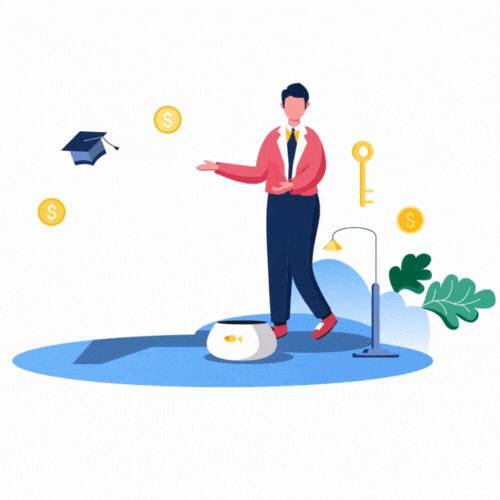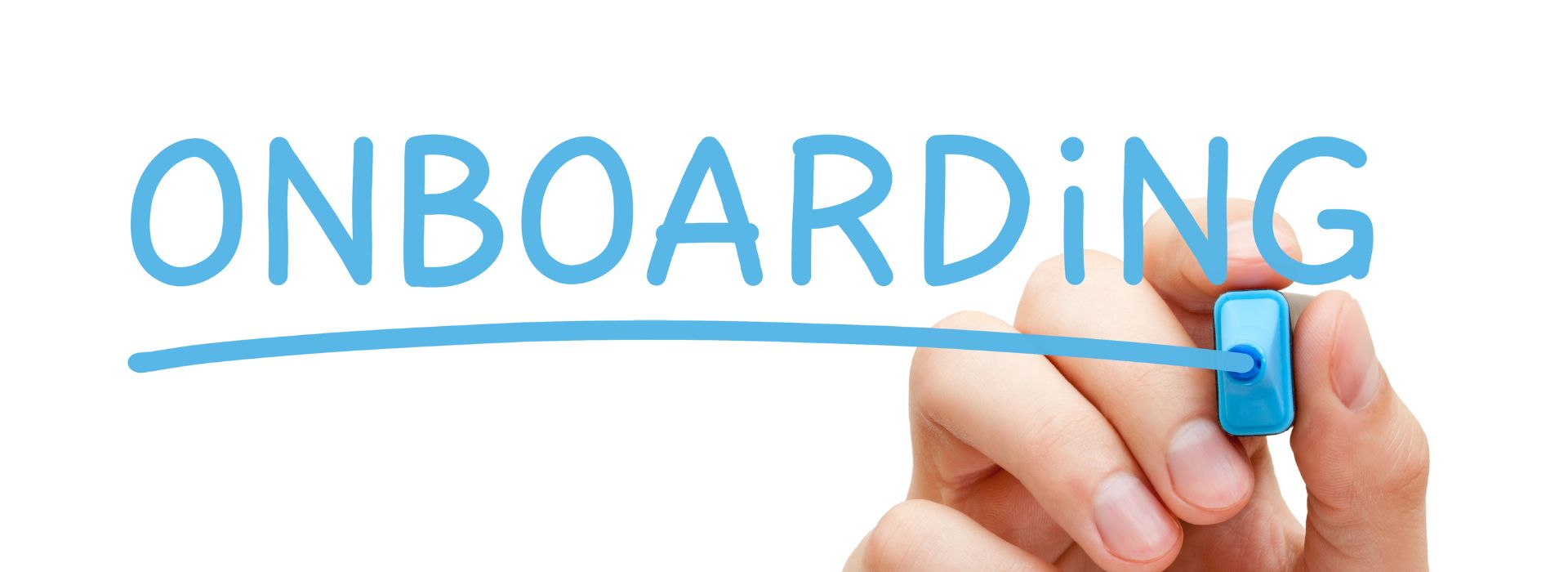
customer onboarding
Educate, Empower, Excel
A single platform for teaching anything—online or offline.
Get Your Free AccountCustomer Onboarding: Best Practices Guide
Educate, Empower, Excel
A single platform for teaching anything—online or offline.
Get Your Free AccountWhat is Customer Onboarding?
Customer Onboarding is what establishments vouch for when it comes to being successful in a highly competitive market today. Studies show:
- 63% of customers think onboarding is key to deciding to subscribe to a product. 74% of potential customers will switch to other solutions if the onboarding process is complicated.
- 86% of the customers say they will remain loyal if onboarding and continuous education are provided. *
Edulyte breaks down customer onboarding and customer service training programs so your company can build a solid customer base and brand loyalty.
Defining Customer Onboarding
Customer onboarding entails the process in which a company introduces its products or services to new customers and engages them. The customer onboarding process encompasses establishing a reliable foundation for their success with your product or service. Effective onboarding focuses on these essential components:
- Showcase the Value: Quickly project the core value proposition of your offering. Let the customer experience the “aha!” moment of how your product benefits them.
- Frictionless Setup: The customer onboarding process makes the initial setup smooth and intuitive. It guides users through the basics of the system to get it up and running.
- Personalised Experience: Tailor the onboarding experience to individual user needs and preferences. Such a scenario involves understanding their needs and suggesting relevant features.
- Open Communication and Feedback: Establish clear communication channels to address user questions and concerns promptly. Provide channels for customers to ask questions, give feedback, and receive support.
Why Onboarding Matters for Customer Success
Effective customer onboarding is crucial for customer success as it sets the stage for a positive and productive relationship between the customer and the company.
- Impactful Impression: Onboarding is a customer’s first interaction with the product or service. A positive onboarding experience builds trust and a positive impression of the company.
- User Engagement and Retention: Well-designed onboarding with customer success training increases user engagement by helping customers understand the product or service’s value. It also reduces churn by equipping users with the knowledge and confidence to succeed.
- Improved Customer Lifetime Value (CLTV): Engaged customers who find value early on are likelier to become loyal brand advocates and repeat purchasers. It translates to a higher CLTV, boosting your overall revenue potential.

Essential Steps in the Customer Onboarding Process
The customer onboarding process with customer success training and customer service training modules might sound overwhelming, but with the crucial steps uncovered by Edulyte, your company can master it efficiently.
Creating a Comprehensive Onboarding Checklist
A step-by-step checklist ensures a smooth and comprehensive experience for every new customer.
- Pre-boarding: Nurture leads and address initial questions even before official sign-up. Provide helpful resources and content that showcase your value proposition.
- Account Setup: Efficiently guide users through the account setup process, collecting essential information while keeping the experience seamless.
- Product Tour and Training: Offer interactive tutorials or product tours highlighting core functionalities and user benefits.
- Knowledge Base & Resources: Provide a comprehensive knowledge base, FAQs, and other resources to empower users with self-service options.
- Feedback & Support: Establish clear channels for feedback and provide ongoing support throughout the onboarding journey. Actively address user questions and concerns.
- Success Measurement: Track prominent metrics to measure the effectiveness of your onboarding program.
Setting Clear Expectations Early On
Clear expectations at the onset ensure transparency, help manage customer experience, and reduce churn.
- Communicate Goals and Objectives Clearly: Outline the onboarding process goals and objectives to the customers so they understand their expectations.
- Set Realistic Timelines: Be transparent about the time it typically takes to achieve desired results. Avoid setting unrealistic expectations.
- Define Success Metrics: Establish clear benchmarks for success, helping users understand how to measure progress towards their goals.
- Regular Communication and Feedback: Maintain regular communication with the customer throughout onboarding to provide updates and address concerns. Establish a feedback loop to gather customer input to adjust the onboarding process.
Best Practices for Customer Onboarding
A one-size-fits-all approach to the onboarding process is not practical. It is advisable to customise the process to fulfil varied customer needs.
Tailoring Experiences to Meet Customer Needs
Here’s how you can personalise the onboarding process to make it impactful.
- Segmentation of Users: Group customers based on shared goals or needs. This way, onboarding content can be personalised and rearranged to resonate with specific user segments.
- Employ User Data: Sign-up information can be used to personalise the onboarding journey.
- Customised Support: To address specific needs, offer customised support like dedicated accounts managers or support teams.
- Offer Multiple Learning Paths: Provide onboarding options like interactive tutorials or video guides. It empowers users to choose their preferred learning style.
Using Feedback to Improve the Onboarding Experience
Collecting customer feedback and changing the onboarding process based on it optimises the process and makes the process productive. Staff training for customer service and customer service training modules is essential.
- Feedback Surveys: Send out surveys during the onboarding process to gather feedback on the customer’s experience and identify areas for improvement.
- A/B Testing: Test different onboarding approaches with smaller user groups—Analyse data to identify the most compelling features or walkthroughs for broader implementation.
- User Success Interviews: Conduct in-depth interviews with a sample of users to gather details, including specific pain points and areas for improvement.

Tools and Technologies for Effective Onboarding
Technology is an excellent ally in finding the best practices for customer onboarding. A variety of technologies and platforms can empower the creation of a smooth and streamlined onboarding experience
Overview of Useful Onboarding Tools
Discover an infallible list of technologies and platforms to enhance customer onboarding. Use these tools for fantastic staff training in customer service.
- App-based Guidance Tools: These platforms allow you to create interactive product tours and tooltips that guide users within your application. Examples include WalkMe and Userlane.
- User Onboarding Software: These comprehensive platforms offer features like automated email sequences, task management checklists, and progress-tracking functionalities. Popular options include Appcues and Onboarding.
- Customer Communication Platforms: These tools facilitate automated welcome emails, targeted messaging, and live chat support functionalities. Examples include Intercom and Freshworks.
- Analytics & Feedback Tools: These solutions help you track user engagement during onboarding, identify areas of friction, and gather valuable customer feedback. Popular tools include Hotjar and FullStory.
Integrating Technology into Your Onboarding Strategy
Integrating these tools into your overall onboarding strategy can improve efficiency and customer satisfaction in several ways:
- Automation of Repetitive Tasks: Utilise onboarding software to automate email sequences, task reminders, and progress tracking.
- Customisation of Process: Employ customer data and segmentation tools to tailor onboarding content, walkthroughs, and communication to specific user needs and goals.
- Data-Driven Insights: Use onboarding analytics tools to track user engagement, identify improvement areas, and measure your onboarding program’s effectiveness.
Training Techniques for Enhancing Customer Service
Empowering your customer service team and customer service training programs are the key to fostering positive interactions. Explore effective training techniques with customer service training ideas that can equip your staff to handle any situation and elevate the customer experience.
Customer Service Training Programs: A Deep Dive
These key components should be part of your effective customer service training online and offline programs:
- Product Knowledge: Train staff on the product’s in-depth functionalities and features. Empower them to handle troubleshooting and typical customer pain points.
- Communication Skills: The cornerstone of customer service staff training should be active listening, empathetic language, and de-escalation techniques for handling difficult situations.
- Problem-Solving Skills: Equip your team with critical thinking and problem-solving abilities so that they can effortlessly create solutions and navigate complex scenarios.
- Customer Service Policies & Procedures: Ensure staff understands company policies regarding returns, refunds, warranties, and dispute resolution processes.
- Technology & Tools: Train your team on using customer relationship management (CRM) software, ticketing systems, live chat functionalities, and other relevant technology platforms.
- Evaluation & Feedback: Gather feedback from staff and customers to identify areas for improvement and keep training content relevant.
Innovative Training Ideas and Modules
Creative ideas and training modules are a surefire way to educate staff on customer service training online and offline. This ensures they are well-prepared to handle customer interactions and customer service training topics during the onboarding phase. Uncover customer service training ideas below.
- Scenario-Based Training: Simulate real-world onboarding scenarios to practice handling customer training, including common customer questions and potential roadblocks.
- Role-Playing Exercises: Make the staff act out different onboarding situations, focusing on effective communication techniques and problem-solving approaches.
- Onboarding Bootcamp: Conduct intensive onboarding boot camps for new customer service representatives. Immerse them in product knowledge, communication skills training, and hands-on practice exercises focused on onboarding.
- Gamification: Include gamification elements in training modules. It increases engagement through interactive activities and challenges.
Optimising Staff Involvement in Customer Onboarding
Your staff is the task force that enables a smooth onboarding process. Uncover strategies that train them to engage effectively and become onboarding champions through offline and online customer service training.
Training Your Team for Effective Customer Engagement
Equipping your team with customer experience training to engage effectively is crucial for fostering trust and setting the stage for long-term company success. They should also be equipped with customer service training topics to navigate customers’ different demands.
- First Impressions: Your team should be able to engage effectively and create a positive first impression. It is paramount as the team is often the first point of contact for new customers.
- Building Rapport: Effective communication and problem-solving skills help your team build strong customer relationships, leading to increased trust and loyalty.
- Problem Resolution: Customers may encounter issues during the onboarding process, and your team’s customer experience training can resolve these problems quickly and efficiently, impacting customer satisfaction.
The Role of Staff in Customer Retention and Satisfaction
Your customer experience training can decide your company’s customer retention rates. How? Through constructive interaction and support during the onboarding process.
- Positive First Impression: A supportive and helpful team fosters trust and sets the tone for a successful customer relationship.
- Proactive Support: A trained staff can anticipate customer needs and address potential challenges. It demonstrates a commitment to customer success.
- Reducing Churn: By providing excellent support and assistance during onboarding, your staff can help reduce churn rates by ensuring customers are successfully onboarded and satisfied with your product or service.
Measuring the Success of Your Onboarding Process
Are you unsure if your onboarding program is performing well? Key customer onboarding metrics and indicators of success help you evaluate its productivity.
Key Metrics and Indicators for Onboarding Success
What are some key performance indicators (KPIs) or customer onboarding metrics to consider to measure the success of your onboarding process? Include the following in your customer onboarding checklist.
- Completion Rate: This measures the percentage of users completing the onboarding process. A low completion rate indicates potential friction points.
- Time to Value (TTV): This measure tracks how long users can achieve a specific value proposition with your product.
- Customer Satisfaction Score (CSAT): Surveys that gauge customer satisfaction at critical points during onboarding provide valuable insights into user experience.
- Support Ticket Volume: A surge in support tickets during onboarding might indicate confusing steps or a lack of clarity.
- User Engagement: Track user activity within your product after onboarding. Identify the key performance indicators (KPIs) that can be used to measure the effectiveness of your customer onboarding process.
Continuous Improvement in Customer Onboarding
Customer onboarding is an ongoing process that requires continuous improvement, including customer training. Here’s how to leverage customer onboarding metrics for a data-driven approach:
- Regular Reviews: Schedule periodic reviews to analyse onboarding metrics and identify areas for improvement.
- A/B Testing: Test different onboarding approaches with smaller user groups to see which strategies yield the best results.
- User Feedback: Actively solicit user feedback through surveys, interviews, and in-app feedback mechanisms. Use their insights to refine the onboarding experience.
- Focus on Friction Points: Identify areas with high drop-off rates or low engagement in the onboarding process. Focus improvement efforts on streamlining these sections.
- Adapt to User Behavior: As your user base grows and evolves, user needs and expectations might change. Continuously adapt your onboarding process based on user behaviour data.
- Embrace Automation: Use onboarding automation tools to personalise the experience and streamline repetitive tasks. This will free up your team to focus on more complex customer interactions.
Conclusion and Additional Resources
Recap of Onboarding Best Practices
Customer onboarding, including customer training, is crucial to a company’s success. The critical journey transforms new sign-ups into satisfied, engaged customers.
Benefits of onboarding best practices and customer service training programs include:
- Increased customer retention: A well-crafted onboarding process reduces churn by equipping users with the knowledge and confidence to succeed.
- Boosted customer loyalty: Engaged customers who find value early on are likelier to become loyal brand advocates.
- Reduced support costs: Proactive onboarding addresses user questions and challenges upfront, deflecting support tickets.
Some essential onboarding best practices that can be your company’s customer onboarding checklist include:
- Personalised experience: Tailor onboarding content to address individual user needs and goals.
- Prioritise clear communication: Establish clear communication channels and actively address user questions.
- Leverage technology: Utilise onboarding software, in-app guidance tools, and customer service platforms to streamline the process and gather valuable data.
- Train your customer service team: Equip your staff with communication and problem-solving skills to engage with new customers during onboarding.
- Continuously measure and improve: Track critical metrics, gather user feedback, and iterate on your onboarding program to ensure ongoing effectiveness.
Further Reading and External Resources
Here are some additional resources to delve deeper into customer onboarding:
Step Up Your Teaching Game Today!
Sign-up for a personalised dashboard, teaching tools, and unlimited possibilities!

Frequently Asked Questions
Customer onboarding guides new customers to successfully use and benefit from your product or service. It involves educating them about the product, helping them set it up, and ensuring they understand how to get the most value out of their purchase.
An effective onboarding process is crucial because it directly influences customer satisfaction, retention, and loyalty. A smooth onboarding process ensures customers feel supported and valued, which can lead to increased customer lifetime value and lower churn rates.
A customer onboarding checklist should include critical tasks such as welcoming the customer, providing essential product information, setting up necessary accounts, scheduling initial training, and establishing clear lines of communication for ongoing support.
Technology can streamline the onboarding process by automating routine tasks, providing interactive and self-service training tools, and offering real-time support. Tools like CRM systems, educational webinars, and customer portals can enhance the efficiency and effectiveness of onboarding.
Best practices for customer service training programs include regular and comprehensive training sessions focusing on communication skills, problem-solving, product knowledge, and empathy. Tailoring the training to meet the specific needs of your customer service team and customers can also significantly improve its effectiveness.
The success of customer onboarding can be measured through metrics such as time to first value, customer satisfaction scores, net promoter scores (NPS), reduction in churn rate, and customer retention rates. Regularly tracking these metrics can provide insights into how well your onboarding process works and where it can be improved.
Yes, customer onboarding has a significant impact on customer retention. Effective onboarding helps ensure that customers understand and are satisfied with your product or service, which increases the likelihood that they will continue to use it and even upgrade or expand their usage over time.
Innovative customer service training ideas include role-playing exercises to handle different scenarios, incorporating gamification to make training more engaging, using virtual reality (VR) simulations for immersive learning experiences, and integrating customer feedback directly into the training curriculum.
Common challenges in customer onboarding include managing customer expectations, ensuring consistent communication, training customers with varying levels of tech-savviness, and integrating the customer’s needs with the capabilities of the product or service.
Customer service training should be updated regularly to reflect changes in products or services, new technologies, and evolving customer expectations. A good rule of thumb is to review and potentially update training programs at least once a year or more frequently if significant changes occur in the market or your offerings.

